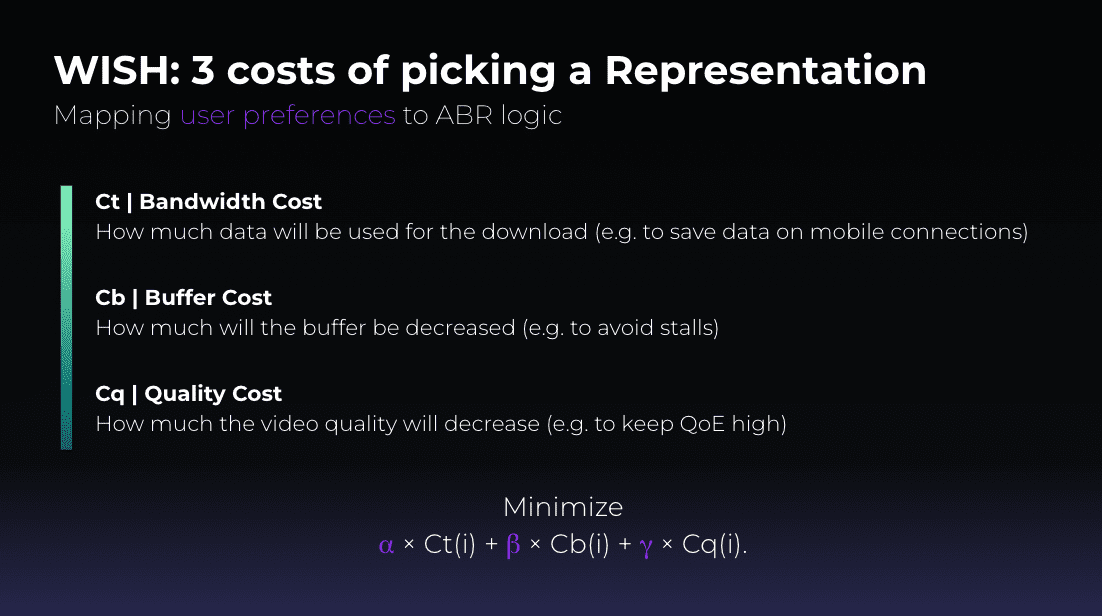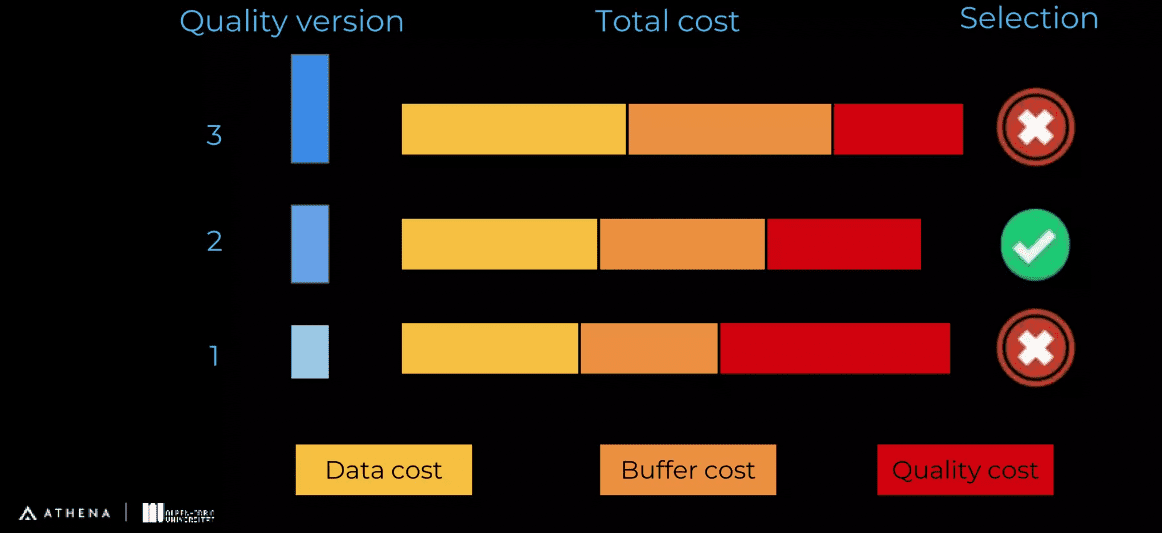Video streaming has grown rapidly over the past few years and is the prominent content people engage with online. This puts a lot of pressure on streaming companies as they now have to support a wide range of devices to maximize their viewer reach. Additionally, depending on the device type and the user’s network connectivity, viewers could experience playback issues when streaming. This is where adaptive bitrate streaming (ABR) and the platform’s video player they use on that device come into play, as they help ensure a better viewer experience. However, with WISH ABR, there is now a way to customize the ABR to the user’s device configuration and further improve the quality of experience (QoE).
In this blog, we will go into the essentials of ABR streaming, how WISH ABR is changing that methodology, and what Bitmovin has done to make it available on the Bitmovin Player.
What is adaptive bitrate streaming, how does it work, and what are the benefits?
Adaptive bitrate (ABR) streaming refers to the logic that a video player uses to dynamically adjust the quality of the video stream based on the available bandwidth. It ensures that users receive the best possible viewing experience by continuously adapting the video bitrate to match the network conditions. For example, if the user has a poor connection, it will request lower-quality packets from the edge, and when the connection is healthy again, it will request the highest quality available.
It works by encoding the video content into multiple renditions, each with different bitrates and quality levels. These renditions are further divided into small segments or packets. The video player then evaluates and monitors the network conditions and selects the appropriate rendition for each segment, optimizing for quality and smooth playback. You can read more on the general aspects of Adaptive bitrate streaming in our recent blog.

Diagram of how ABR works per connection type
The Benefits of ABR
- Seamless playback:
- ABR ensures viewers experience minimal buffering and interruptions, even in challenging network conditions.
- ABR ensures viewers experience minimal buffering and interruptions, even in challenging network conditions.
- The highest quality possible:
- By dynamically adjusting the video bitrate, ABR delivers the best possible quality while avoiding buffering issues.
- By dynamically adjusting the video bitrate, ABR delivers the best possible quality while avoiding buffering issues.
- Bandwidth efficiency and cost savings:
- ABR optimizes bandwidth usage by adapting the video quality to match the available network capacity, reducing data consumption.
- ABR optimizes bandwidth usage by adapting the video quality to match the available network capacity, reducing data consumption.
- Device compatibility:
- ABR can be utilized across a wide range of devices, including mobile phones, tablets, smart TVs, game consoles, set-top boxes, and browsers.
What is WISH ABR and how is it different?
First developed by Minh Nguyen and the Athena Team and focused on mobile device playback, WISH stands for Weighted Sum model for HTTP Adaptive Streaming and takes the ABR logic one step further. Instead of just adapting it to network conditions, WISH ABR enables the personalization of the ABR to fit specific use cases. This essentially gives platforms the tools to improve QoE by customizing their ABR logic to specific device settings, configurations, types, and other variables that may be common to a streaming platform’s audience. Proving this concept works, in WISH’s testing evaluation, it was able to enhance QoE by up to 17.6% and reduce data usage by 36.4%.
WISH’s logic is based on a mathematical model consisting of three distinct components /cost factors:
- Bandwidth cost
- “How much data will it be used for the download?”
- Buffer cost
- “How much will the buffer level decrease?”
- Quality cost –
- “How much will the video quality decrease?”

The mathematical model that WISH is based on.
The algorithm evaluates each video rendition, judging each value from the “costs” listed above, and selects the one that balances them all the best with the lowest overall cost. WISH lets users adjust this balance based on their preference, like choosing between better video quality or less buffering, depending on their settings.

An example of WISH selecting the perfect rendition at that moment as it evaluates the total cost of the variables (image from the Athena publication)
How did we implement it for the Bitmovin Player?
Seeing how well it performed with mobile devices, we wanted to expand its capabilities and leveraged our collaboration with the Athena team to implement it for our Web SDK. This is important as it could then be used across smart TVs, game consoles, browsers, set-top boxes, and more. After some minor adjustments and refinements, we deployed it successfully. Now, anyone using the Bitmovin Player can test it out for themselves and apply it to their workflow by accessing our API documentation for AdaptationConfig, AdaptationLogicType, and TweaksConfig.
Ongoing Improvements and Testing
We are still defining specific attributes around the new logic before making it a default functionality. However, from our initial testing, we’ve already seen pretty good results, specifically regarding rebuffering (Stall time) and overall QoE (Mean ITU score). In the future, we are looking to list “presets” that enable specific behaviors by device, giving streaming companies an expectation of what they can achieve with each setting, easily enhancing the QoE for their audience. Additionally, the WISH ABR can be utilized with the Bitmovin Player for any industry and will also be the main ABR logic for our latest video player, Player Web X.
Conclusion
ABR functionality has revolutionized the video streaming landscape by making it possible for streams to adapt the video quality to match network conditions dynamically. WISH ABR takes this concept a step further by introducing a user-centric approach to adaptive bitrate selection and optimizing the streaming experience to align with the preferences of individual viewers. The integration of WISH ABR into the Bitmovin Player further enhances the capabilities of our powerful solution, empowering content providers to deliver a superior quality of experience. Now, we can definitely say the future of video streaming is poised to be more personalized, efficient, and immersive.




